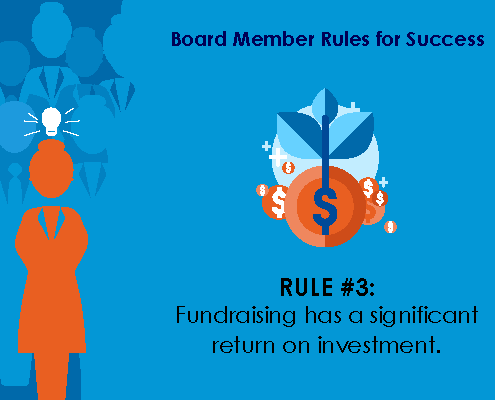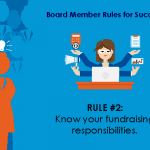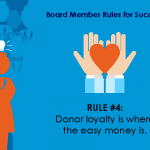Rule #3 for Board Members: Fundraising Has a Significant Return on Investment

As a board member, did you ever consider that your fundraising expenses have a significant return on their costs?
Every mailing, your technology, consultants, training, all your staff salaries – everything is an investment. Just remember – the entire program brings in so very much more money than it costs.
The Return on Investment in fundraising is something that many board members do not often consider when approving budgets and hiring fundraising talent.
Why fundraising costs matter.
Fundraising costs are not a black hole into which you pour money. Instead, they’re investments that generate money.
Just like you invest in the stock market – and you expect a return, your organization is investing in fundraising strategies that produce a generous return.
Receive expert advice. Direct to your inbox. Subscribe
It’s hard, because the nonprofit mindset thinks of fundraising as a cost center, not a Revenue Generating machine.
Fundraising pays for itself many times over.
The smart board member knows that the more resources you invest in fundraising, then the more you will exponentially raise.
If you want to expand your programming and the reach of your organization’s mission, you would invest first in fundraising to bring in more funding.
Here’s a guideline for board members when you are considering a fundraising investment:
- You should expect to make at least 3 or 4 times that amount of money.
- You would want to pay back what it costs, plus bring in a return of at least 3-400%.
Many organizations have endowments that are bringing in 4% return. Compare that to fundraising, which brings in a return of at least 100 – to 1000%.
Some people have suggested that it’s a smart move to borrow board-restricted funds, invest it into profitable fundraising strategies, and then pay the funds back. What do you think of that idea??
Should you cut the fundraising budget to save money?
Cutting the fundraising budget is counter-productive if you are trying to save money.
I’ve seen CEO’s and boards start squeezing the fundraising budget. What happens? Then they’re unhappy when their contributions go down.
Find out how we can help you achieve your fundraising goals with world-class consulting and custom training.
They don’t see the cause and effect. But it’s right there in front of their eyes.
The fact is, if you cut the direct mail budget and send out poor quality appeals, then the number of gifts you receive will go down.
Bottom Line: Fundraising actually pays for itself AND it yields a substantial profit.
Investing more in fundraising will not take money away from your programming. Instead it will increase your revenue – and your ability to help people.
You can expect a measurable ROI from investing in your fundraising program.
This is Rule #3 from o video series: The Board Member’s Guide to Fundraising: 10 Rules for Success Every Board Member Should Know.
If you want to enlighten your board members, and help them understand that . . .
— investing in fundraising yields more money for the mission
— fundraising events are not a cost-effective strategy
— the big money is in cost-effective major gifts fundraising
— how they can help bring in more money for your important work
Then share this video education series with them about how fundraising really works:


